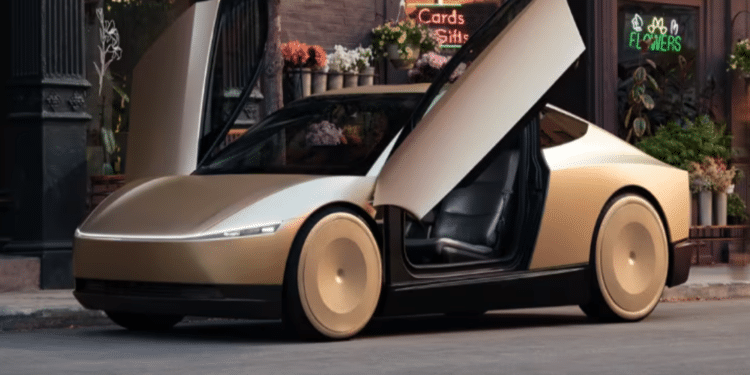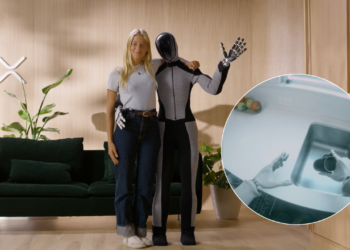A sustainable revolution for smart cities: inductive charging, low operating costs and an innovative travel experience
The world of urban transport is evolving, and Tesla is ready to lead the change. During the ‘We, Robot‘ event held in Los Angeles on 10 October 2024, Elon Musk unveiled one of the most eagerly awaited innovations: the Cybercab, a fully autonomous robotaxi that promises to transform the way we move around cities. With a combination of artificial intelligence, ultra-low operating costs and a strong focus on sustainability, Cybercab could become the centrepiece of the smart cities of the future.
CyberCab: An unprecedented autonomous taxi
The Cybercab represents one of the boldest and most innovative proposals in the field of urban mobility. Devoid of steering wheel and pedals, this vehicle is designed to operate without any human intervention, exploiting an autonomous driving platform based on advanced artificial intelligence and state-of-the-art sensors: Full Self Driving (FSD). Its on-board technology includes lidar, radar and camera systems that allow the vehicle to navigate safely through city traffic, identifying obstacles and pedestrians in real time. But it is not just the technology that makes the Cybercab a unique proposition. Aesthetically, the vehicle recalls the futuristic lines of the Cybertruck, with a minimalist yet robust design. The gull-wing doors, which open upwards, are not only a stylish element, but improve accessibility in congested urban areas.
Inductive recharging and reduced operating costs
One of the most innovative aspects of the Cybercab is the possibility of inductive charging, a technology that allows the vehicle to recharge itself without the need to physically connect a cable. This system could allow robotaxis to operate without interruption, recharging automatically in designated areas, such as car parks or dedicated parking stations, which will also clean and sanitise the vehicle after each ride. The idea of an autonomous vehicle that recharges itself is a decisive step towards an emission and interruption-free transport future. From an economic point of view, the Cybercab offers considerable advantages. Elon Musk has stated that the cost of each vehicle will be around $30,000, a surprisingly low figure for a fully autonomous taxi (Level 5). Added to this are operating costs of only $0.20 per mile, making Cybercab transport not only accessible, but also potentially cheaper than current ride-sharing or traditional taxi solutions.
Sustainable mobility and smart cities
Tesla designed the Cybercab with a strong focus on environmental sustainability. Fully electric, the robotaxi will help reduce carbon emissions and noise pollution in cities, two of the most pressing challenges for modern metropolises. But that’s not all: the possibility of integrating the vehicle with solar charging infrastructure or other renewable energy sources could make a zero-emission transport network possible. This vision fits perfectly with Tesla’s ambition to create fleets of autonomous vehicles that operate in symbiosis with the infrastructure of the smart cities of the future. Automatic charging and real-time digital management would allow these vehicles to be always available and optimised for passenger needs, reducing traffic congestion and improving transport efficiency.
A new travel experience
In addition to its technical features, Cybercab is designed to offer a state-of-the-art travel experience. The interior is fully customisable thanks to a digital interface that allows passengers to adjust lighting, entertainment and comfort according to preference. With an integrated voice assistance system, users can change the route or plan stops simply with voice commands. Safety was another priority for Tesla. Thanks to autonomous driving, the Cybercab is able to continuously monitor road and traffic conditions, proactively preventing accidents. This makes the journey not only comfortable, but extremely safe.
The potential impact on the market
If Tesla succeeds in overcoming technical and regulatory hurdles, Cybercab could represent a real revolution in urban transport. The large-scale implementation of these robotaxis could drastically reduce the number of private cars on the road, helping to relieve congestion and improve the quality of life in cities. Musk has already floated the idea of integrating the Cybercab into a business model based on car-sharing or subscriptions, making autonomous transport accessible to a wide range of users, from families to commuters. In this way, mobility could become more efficient and economically sustainable, benefiting both individuals and the environment.
Final considerations
Cybercab represents a decisive step towards the future of urban mobility. Combining advanced technologies, low operating costs and a concrete commitment to sustainability, Tesla could truly revolutionise the public and private transport sector. With its futuristic design and inductive charging capability, the Cybercab is poised to change the way we live and move in the cities of tomorrow. If production starts as planned by 2027, we could soon see the streets of major metropolises invaded by these robotaxis, ready to take us to a greener, more connected future.

































